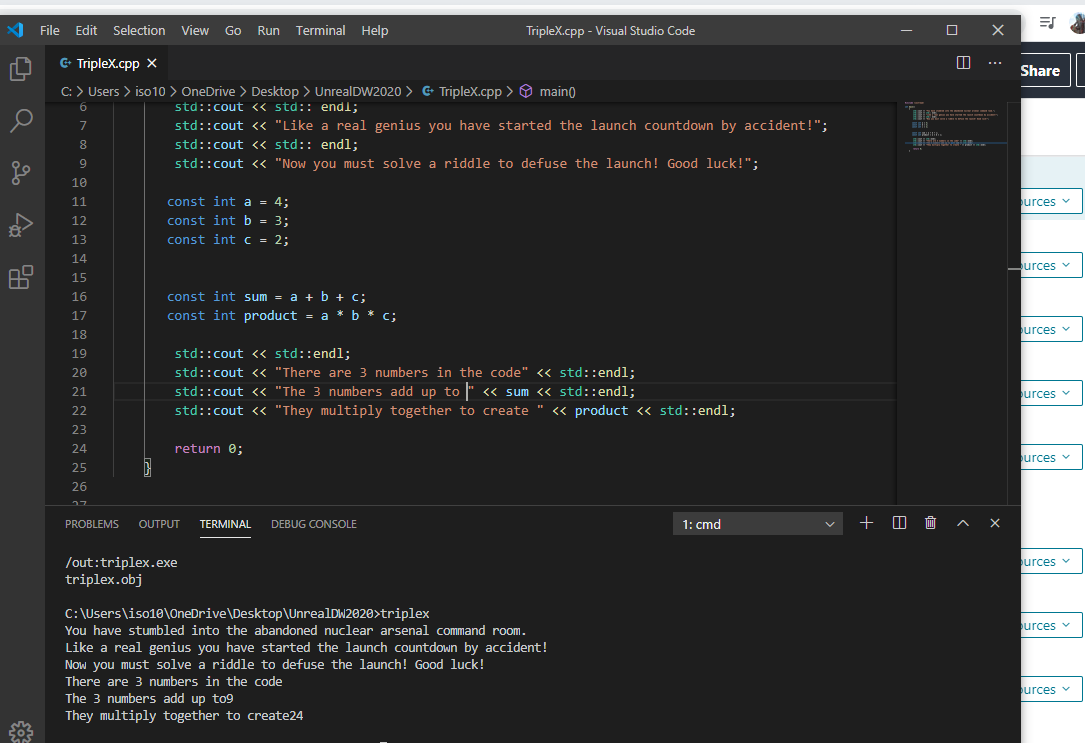What does our preprocessor directive do?
The iostream that is ‘#included’ is a prewritten program? I don’t know yet. I assume at this point that iostream is a program that reads commands like endl; and int to create a work space…
Why do we have a main function? What does it’s return statement do?
This likely means that there are non-main… maybe: tributaries? that we shall being forging…?
The Return statement is the ‘amen’ and no more digiprayers forth hence… unless the return is anything but ‘0’.
Explain our expression and declaration statement that we have written so far, to summarize what our program is doing.
First we express text, mine is: “you’ve stumbled into a nuclear arsenal command bunker, and like a genius, you’ve accidentally triggered the launch sequence. now you must solve a riddle to defuse the launch.”
after expressions, code begins with declaration of variables using the command int
variables are a, b, and c.
then the sum of these numbers, and also the product of the three numbers are developed, and plotted out below the expressions.
At this point I haven’t gotten to the portion where the explanation of how the riddle is solved has been added to the program, but that should be easy now.


